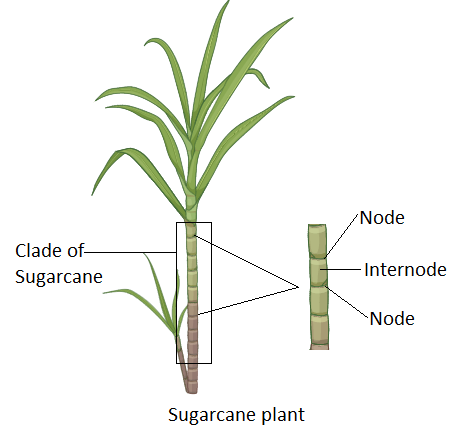
Plants with joined stem and hollow internodes are known as
A. Culms
B. Scape
C. Ephemerals
D. Lianas
Answer
552.3k+ views
Hint: The grass species are the ones that have jointed stems with hollow internodes. These are used for animal feed as they are very nutritious. These specialized stems are also called aerial stems of grasses and sedges.
Complete answer: Most of the grass and sedge species have aerial stems that have hollow internodes and these are known as culms. Culm term is derived from a Latin word called ‘Culmus.’ The culms form the most obvious part of the grasses. They are involved in the photosynthetic process and also guarantee generative reproduction. These aerial stems expose flowers to various extreme and permanent environmental factors. These culms are green, stiff, and flexible. Most of the culms are tubular and their periphery is made of the epidermis with stomata. Culms also have a sub-epidermal part which is made of un-lignified Chlorenchyma. Chlorenchyma is a parenchyma tissue containing chloroplasts.

Culms are also sometimes referred to as rootlets of germinated grains in the production of malted grains. Deculming is a process in which culms are removed when producing barley malt. But in sorghum or millet malt production, culms form an important part. Culms are very nutritious parts of grass species. Thus, these are used as animal feed. Culms of sugarcane and bamboo trees are also very important parts used in industrial processes. Culms of bamboo are woody ringed stems having hollow nodes. The bamboo culms form branching clusters and they originate from the thick rhizome of bamboo.
So, from the above discussion, we can conclude that option A is the correct answer.
Note: Bamboo culms are of larger sizes with a height of 10 to 15 cm in small bamboos and 40 meters in large bamboo species. The bamboo culms have young leaves on them that arise directly from rings. Mature bamboo culms sprout and bear horizontal branches having leaves.
Complete answer: Most of the grass and sedge species have aerial stems that have hollow internodes and these are known as culms. Culm term is derived from a Latin word called ‘Culmus.’ The culms form the most obvious part of the grasses. They are involved in the photosynthetic process and also guarantee generative reproduction. These aerial stems expose flowers to various extreme and permanent environmental factors. These culms are green, stiff, and flexible. Most of the culms are tubular and their periphery is made of the epidermis with stomata. Culms also have a sub-epidermal part which is made of un-lignified Chlorenchyma. Chlorenchyma is a parenchyma tissue containing chloroplasts.

Culms are also sometimes referred to as rootlets of germinated grains in the production of malted grains. Deculming is a process in which culms are removed when producing barley malt. But in sorghum or millet malt production, culms form an important part. Culms are very nutritious parts of grass species. Thus, these are used as animal feed. Culms of sugarcane and bamboo trees are also very important parts used in industrial processes. Culms of bamboo are woody ringed stems having hollow nodes. The bamboo culms form branching clusters and they originate from the thick rhizome of bamboo.
So, from the above discussion, we can conclude that option A is the correct answer.
Note: Bamboo culms are of larger sizes with a height of 10 to 15 cm in small bamboos and 40 meters in large bamboo species. The bamboo culms have young leaves on them that arise directly from rings. Mature bamboo culms sprout and bear horizontal branches having leaves.
Recently Updated Pages
Master Class 11 Economics: Engaging Questions & Answers for Success

Master Class 11 English: Engaging Questions & Answers for Success

Master Class 11 Social Science: Engaging Questions & Answers for Success

Master Class 11 Biology: Engaging Questions & Answers for Success

Class 11 Question and Answer - Your Ultimate Solutions Guide

Master Class 11 Business Studies: Engaging Questions & Answers for Success

Trending doubts
10 examples of friction in our daily life

One Metric ton is equal to kg A 10000 B 1000 C 100 class 11 physics CBSE

Difference Between Prokaryotic Cells and Eukaryotic Cells

1 Quintal is equal to a 110 kg b 10 kg c 100kg d 1000 class 11 physics CBSE

State the laws of reflection of light

Explain zero factorial class 11 maths CBSE




